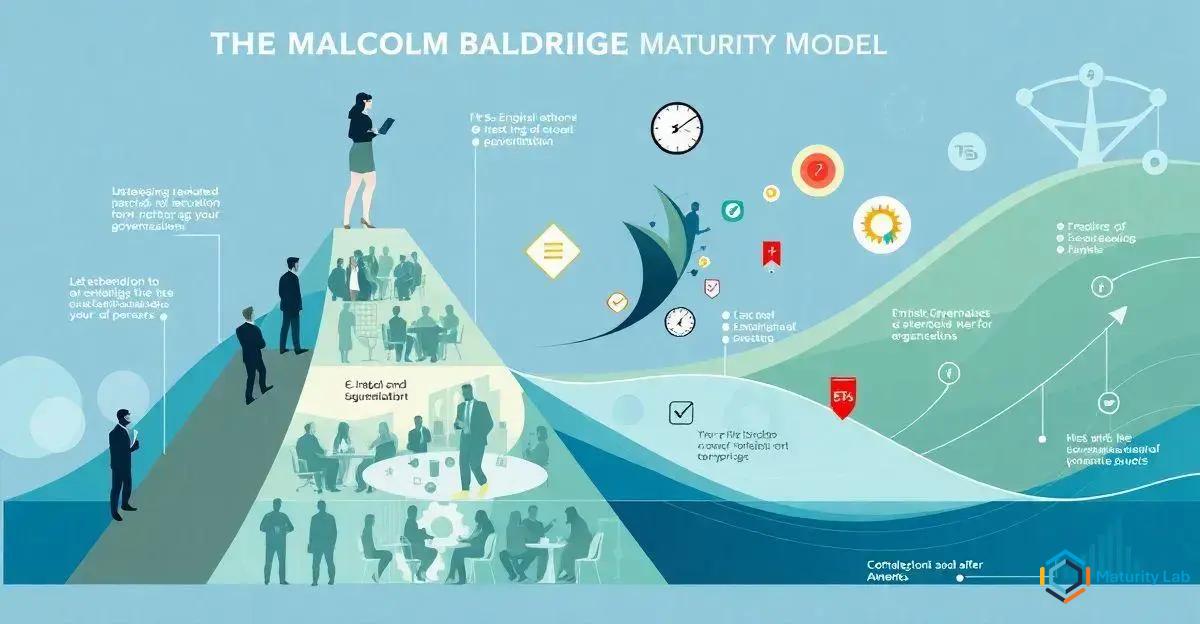The Malcolm Baldrige Maturity Model is a structured framework aimed at improving organizational governance and quality control through continuous enhancement in areas like leadership, strategic planning, and customer focus. It emphasizes self-assessment, policy development, risk management, and ongoing training to boost performance, innovation, and sustainability.
In today’s competitive business environment, achieving excellence in organizational governance and quality control is paramount. The Malcolm Baldrige Maturity Model offers a comprehensive framework to assess and enhance these critical areas. By understanding and implementing this model, organizations can significantly improve their operational efficiency and overall performance. This article delves into the intricacies of the Malcolm Baldrige Maturity Model, providing valuable insights into its application for organizational governance and quality control.
Understanding the Malcolm Baldrige Maturity Model

The Malcolm Baldrige Maturity Model is a robust framework designed to help organizations evaluate their performance across various dimensions. It is rooted in the principles of the Malcolm Baldrige National Quality Award, which emphasizes excellence in leadership, strategic planning, customer focus, measurement, analysis, knowledge management, workforce focus, and operational results.
This model serves as a diagnostic tool that allows organizations to identify their strengths and areas for improvement.
One of the core components of the Malcolm Baldrige Maturity Model is its focus on continuous improvement. Organizations are encouraged to regularly assess their processes and outcomes to ensure they are meeting the highest standards of quality and efficiency. This iterative process involves setting clear objectives, measuring performance against these objectives, and making necessary adjustments to drive improvement.
The model is structured around a set of criteria that are divided into categories. Each category represents a critical aspect of organizational performance. For example, the leadership category examines how senior executives guide the organization and how they communicate with stakeholders. The strategic planning category looks at how the organization sets goals and develops plans to achieve them. The customer focus category assesses how well the organization understands and meets the needs of its customers.
Scoring System
In addition to these categories, the Malcolm Baldrige Maturity Model also includes a scoring system that helps organizations gauge their level of maturity. This system ranges from ‘reactive’ to ‘systematic’ to ‘integrated’ to ‘optimized.’ Organizations at the reactive level are typically responding to problems as they arise, while those at the optimized level have fully integrated and proactive processes in place.
To effectively utilize the Malcolm Baldrige Maturity Model, organizations should begin by conducting a thorough self-assessment. This involves gathering data from various sources, including employee surveys, customer feedback, and performance metrics. Once the data is collected, it should be analyzed to identify trends and patterns. This analysis will provide a clear picture of the organization’s current state and highlight areas where improvements are needed.
In summary, the Malcolm Baldrige Maturity Model is a powerful tool for organizations seeking to enhance their governance and quality control practices. By understanding and applying the principles of this model, organizations can achieve higher levels of performance and ensure long-term success.
Implementing Organizational Governance with the Malcolm Baldrige Maturity Model

Implementing organizational governance using the Malcolm Baldrige Maturity Model involves a structured approach to ensure that all aspects of governance are aligned with the organization’s strategic objectives. The model provides a comprehensive framework that guides organizations through the process of establishing robust governance practices.
The first step in implementing organizational governance with the Malcolm Baldrige Maturity Model is to establish a clear governance structure. This includes defining roles and responsibilities for board members, executives, and other key stakeholders. The governance structure should be designed to promote accountability, transparency, and ethical behavior throughout the organization.
Next, organizations should develop and implement policies and procedures that support effective governance. These policies should cover areas such as risk management, compliance, internal controls, and performance monitoring. The Malcolm Baldrige Maturity Model emphasizes the importance of having well-documented and consistently applied policies to ensure that governance practices are standardized across the organization.
A critical component of governance is risk management. The Malcolm Baldrige Maturity Model encourages organizations to identify, assess, and mitigate risks that could impact their ability to achieve strategic objectives. This involves conducting regular risk assessments, developing risk mitigation plans, and monitoring the effectiveness of these plans. By proactively managing risks, organizations can prevent potential issues from escalating and ensure continuity of operations.
Stakeholder Engagement
Another key aspect of governance is stakeholder engagement. The Malcolm Baldrige Maturity Model highlights the importance of maintaining open and effective communication with all stakeholders, including employees, customers, suppliers, and regulators. Organizations should establish mechanisms for gathering stakeholder feedback and using this information to inform decision-making processes. This helps to build trust and foster a culture of collaboration and continuous improvement.
Performance measurement and reporting are also essential elements of governance. The Malcolm Baldrige Maturity Model provides guidelines for developing performance metrics that align with the organization’s strategic goals. These metrics should be used to monitor progress, identify areas for improvement, and drive accountability. Regular reporting on performance metrics ensures that stakeholders are informed about the organization’s achievements and challenges.
To successfully implement organizational governance with the Malcolm Baldrige Maturity Model, organizations should invest in training and development for their leaders and employees. This ensures that everyone understands the principles of the model and how to apply them in their daily work. Continuous education and training help to embed a culture of excellence and drive long-term success.
In conclusion, the Malcolm Baldrige Maturity Model offers a comprehensive approach to implementing organizational governance. By following the model’s guidelines, organizations can establish effective governance practices that support their strategic objectives and enhance overall performance.
In conclusion, the Malcolm Baldrige Maturity Model serves as an invaluable tool for organizations striving to enhance their governance and quality control mechanisms. By providing a structured framework for continuous improvement, the model enables organizations to systematically assess and elevate their performance across various dimensions. Through its emphasis on leadership, strategic planning, customer focus, and operational results, the model ensures that organizations are well-equipped to meet the highest standards of excellence.
Implementing the Malcolm Baldrige Maturity Model involves a comprehensive approach to governance, encompassing the establishment of clear structures, development of robust policies, proactive risk management, effective stakeholder engagement, and rigorous performance measurement. By adhering to these principles, organizations can foster a culture of accountability, transparency, and continuous improvement.
Moreover, the model’s focus on training and development ensures that leaders and employees are well-versed in best practices, thereby embedding a culture of excellence throughout the organization. As organizations navigate the complexities of today’s business environment, the Malcolm Baldrige Maturity Model provides a reliable roadmap for achieving sustained success and operational efficiency.
Ultimately, the adoption of the Malcolm Baldrige Maturity Model not only enhances organizational governance and quality control but also positions organizations to thrive in a competitive landscape. By leveraging this model, organizations can achieve higher levels of performance, drive innovation, and ensure long-term sustainability.
Frequently Asked Questions about the Malcolm Baldrige Maturity Model
What is the Malcolm Baldrige Maturity Model?
The Malcolm Baldrige Maturity Model is a framework designed to help organizations evaluate and improve their performance across various dimensions, including leadership, strategic planning, customer focus, and operational results.
How does the Malcolm Baldrige Maturity Model enhance organizational governance?
The model provides a structured approach to establishing clear governance structures, developing robust policies, managing risks proactively, engaging stakeholders effectively, and measuring performance rigorously.
What are the key components of the Malcolm Baldrige Maturity Model?
The key components include categories such as leadership, strategic planning, customer focus, measurement, analysis, knowledge management, workforce focus, and operational results, along with a scoring system to gauge maturity levels.
How can organizations implement the Malcolm Baldrige Maturity Model?
Organizations can implement the model by conducting a thorough self-assessment, developing and applying policies, managing risks, engaging stakeholders, measuring performance, and investing in training and development for leaders and employees.
What are the benefits of using the Malcolm Baldrige Maturity Model?
The benefits include improved governance and quality control, enhanced operational efficiency, higher levels of performance, better stakeholder engagement, and long-term sustainability.
How does the scoring system in the Malcolm Baldrige Maturity Model work?
The scoring system ranges from ‘reactive’ to ‘optimized,’ allowing organizations to assess their level of maturity. Organizations at the reactive level respond to problems as they arise, while those at the optimized level have fully integrated and proactive processes.

